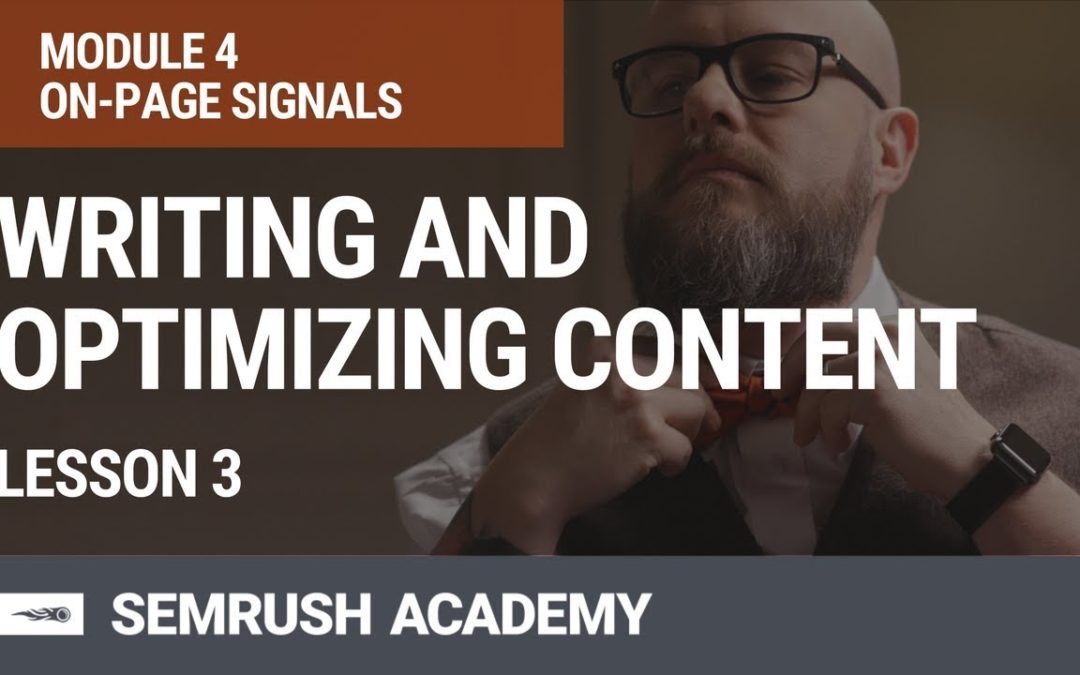Watch our latest video: How to Go Viral on Quora https://bit.ly/ViralOnQuora1
Subscribe to our YouTube channel! http://smr.sh/KdD
You will walk through the entire on-page optimization process.
Watch the full free course at SEMrush Academy: http://bit.ly/2lPfSdj
0:05 Optimizing content in the early days of the internet
0:43 Useful and relevant content
1:55 How create the best content?
✹ ✹ ✹ ✹ ✹ ✹ ✹ ✹ ✹ ✹ ✹ ✹ ✹ ✹ ✹ ✹ ✹ ✹ ✹ ✹ ✹ ✹ ✹ ✹ ✹
You might find it useful:
Find trending concepts to write about with the Topic Research tool:
➠ https://bit.ly/3bPH2G0
Write SEO-friendly copy with the SEO Writing Assistant:
➠ https://bit.ly/35nD2tV
Analyze your content quality by using the Content Audit tool:
➠ https://bit.ly/3f8kNwW
Learn how to maximise your content marketing efforts with our in-depth course:
➠
https://bit.ly/2KMPOsz
✹ ✹ ✹ ✹ ✹ ✹ ✹ ✹ ✹ ✹ ✹ ✹ ✹ ✹ ✹ ✹ ✹ ✹ ✹ ✹ ✹ ✹ ✹ ✹ ✹
In the early days of the internet, optimizing content was all about stuffing keywords. Google looked for pages that included the same keywords as the ones entered into the search, so if you had a page stuffed with keywords, you won.
You also had to create pages for slight variances on each keyword. You’d use the keyword in every possible page element. You’d write content specifically for search engines, even though humans thought it sounded funny.
Google realized that this wasn’t really valuable to users. It was too easy to game the algorithm, and pages weren’t very useful to actual humans.
Today, it’s a completely different focus. If you want to show up well in searches, you’ve got to write content that’s truly useful and relevant. You can’t write for Google – you have to write content that truly answers the question the user is asking. Google has gotten really good at figuring out a user’s intent, and it’s going to serve up results that best answer the searcher’s actual intent.
Let me reiterate – it’s less about matching keywords and more about matching the intent. You should create one robust page with amazing content that matches the intent of all the related keywords that answer that potential query.
So here’s the process. You should already have a categorized list of keywords that you want to target. You’ll then want to figure out what content will answer the intent of each group of keywords. Figure out what your content is going to look like – does your site have a specific template for page layout or are you creating something custom? Then sit down and write your content, and swing back through and make sure you’ve got your targeted keywords included.
There’s no magical keyword density, and there’s no perfect format. Simply create the best content that answers the question. Here’s the biggest pro tip: read your content out loud. Remember, it needs to sound conversational. If you read your content out loud, you’ll hear how it actually sounds. If you’re stuffing keywords, it’s going to sound awkward and clunky. If it sounds like something you’d say face to face to a customer, then you’re on the right track.
#SEOwriting #SEOcontnet #SEOcourse #SEOtutorial #SEMrushAcademy
source

